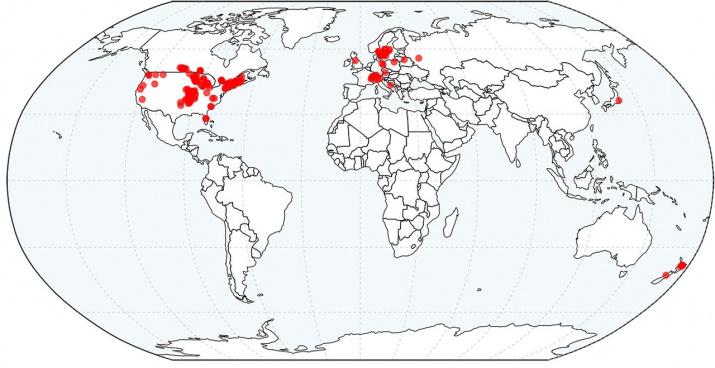Oxygen levels in lakes and reservoirs around the world are rapidly declining. This threatens their inhabitants and water quality. These are the disappointing conclusions of scientists-limnologists, the participants in the international project GLEON. They are made based on the analysis of data collected by the global network of observatories for over 80 years. The only Russian water body included in the study was the Mozhaisk Reservoir. The employees of the Faculty of Geography of Lomonosov Moscow State University have been working on it for several decades.
Comparison of monitoring data showed that since 1980, the oxygen level in freshwater bodies in the temperate zone has decreased by 5.5% at the surface and by 18.6% in the bottom layer of water. At the same time, in a large group of lakes and reservoirs, mainly polluted with nutrients, the oxygen level on the surface increased along with the water temperature rising above the lower limit of the active development of toxic cyanobacteria.
"All processes in the aquatic environment depend on oxygen. This is a support system for aquatic food webs. And when a lake begins to lose oxygen, this is one of the key factors in the extinction of various species in it, including fish. Lakes and reservoirs lose oxygen 2.7-9.3 times faster than the oceans. Such a decrease will have consequences for the entire ecosystem of water bodies," emphasized one of the authors of the paper, a researcher at the Faculty of Geography of Moscow State University Oksana Erina.
The concentration of dissolved oxygen in freshwater bodies also affects greenhouse gas emissions, nutrient dynamics and, ultimately, human health. Despite the fact that lakes and reservoirs make up only about 3% of the land surface, a disproportionately large part of the living creatures and plants of the planet is concentrated in them. The changes that are taking place are worrisome as they could negatively affect the health of freshwater ecosystems.
A decrease in oxygen concentration in the surface horizons occurs primarily due to an increase in water temperature, which is a consequence of climate change. The amount of oxygen that can dissolve in water decreases when it is heated.
However, in some reservoirs, scientists have identified a simultaneous increase in the concentration of dissolved oxygen and an increase in temperature. These water bodies, as a rule, are more polluted with nutrients and have a high concentration of chlorophyll. Thorough heating and a high content of nutrients contribute to the active blooming of cyanobacteria. Their photosynthesis causes oversaturation of surface waters with dissolved oxygen. The negative aspect of the phenomenon is associated with the toxins that these organisms release. They can make the water undrinkable.
In the deep-water zone, the water temperature remains largely stable over many years. Here, a decrease in oxygen concentration occurs in connection with the warming up of surface waters and an increase in the duration of the warm period.
The heating of surface waters in combination with a stable temperature of deeper layers leads to an increase in the difference in density between them. This separation of the water column is called stratification. The stronger the stratification, the less opportunities for water mixing. As a result, oxygen is less likely to enter the bottom layers during the warm period. Strengthening of stratification leads to the formation of anoxic zones and fish kills.
"Oxygen concentration also regulates many other characteristics of water quality. In anoxic conditions, pathogenic bacteria, including those that produce the greenhouse gas methane, begin to multiply. This suggests that, as a result of oxygen loss, the lakes emit more methane into the atmosphere. Also, in the absence of oxygen, phosphorus is released from the bottom sediments, increasing the load on water bodies, which are already often exposed to long-term anthropogenic pollution," said Erina.
In the course of the work, the results of which are published in the journal Nature, limnologists analyzed more than 45 thousand profiles of dissolved oxygen and the temperature of almost 400 lakes in different regions of the world. Most of the data is collected in the temperate zone.
A group of the Faculty of Geography of Moscow State University under the leadership of Oksana Erina is working on the Mozhaisk Reservoir. In the coming years, it is planned to improve the monitoring program and increase the information content of the collected data.



